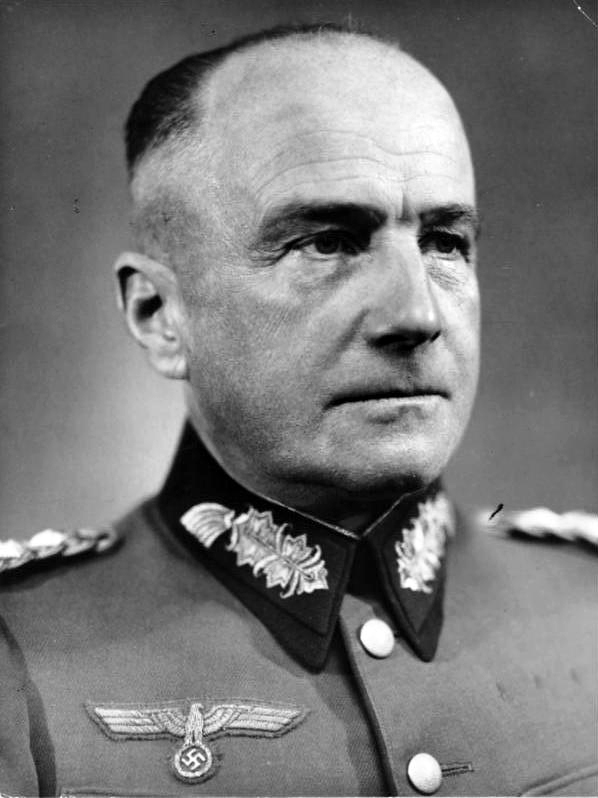Copy
Army High Command
. H.Q., Army High Command, 30th March 1941
Army Gen. Staff, Dept. Ops. (I)
No. 540/41 top secret, chiefs only 9000664
Deployment Instructions for "Action 25" and supplementary instruction for action "Marita"
1. The political situation in the Balkans having changed by reason of the Yugoslav military revolt, Yugoslavia has to be considered as an enemy even should it make declarations of loyalty at first.
The Fuehrer and Supreme Commander has decided therefore to destroy Yugoslavia as quickly as possible. For camouflaging purposes the operation shall be called "Action 25".
2. The intentions of the Army High Command are to break into Yugoslavia by means of a concentric operation emerging from the area Klagenfurt—Graz and near N. Kanizsa on one side (2nd Army) and from the area near Sofia on the other side (12th Army). General direction should be Belgrade and south of it. By these operations the Yugoslav Army should be destroyed and the southern part of Yugoslavia should be captured as early as possible, so that communications to the Italian army group in Albania can be opened and a basis be created for the continuation of the German-Italian offensive against Greece.
An early opening of traffic on the Danube river and the capture of the copper mines at Bor are of importance for the military economy.
70
R-95
3. Enemy situation:
In northern Yugoslavia defensive conduct of war may be expected. The fact that the races there are in opposition to each other may even induce the Yugoslav Command to defend only the Serbian crown lands. In this case numerous efficient bolt-positions may be expected both in Slovene and Croation parts of the country.
It is presumed that the enemy will defend the Eastern border in southern Yugoslavia by means of numerous bolt positions. At the same time he will try to keep his rear free by invading Albania in cooperation with Greek-British forces.
When thé German attack succeéds in severing the coherence of the Yugoslav defence by capturing the main roads of communication, the Yugoslav army may be expected to defend itself strongly in the mountain area so long as sufficient ammunition and food are available. The problem of nationalities may play a decisive part with regard to duration and toughness of this resistance.
Details with regard to the enemy situation see enclosure 1.
4. The orders issued with regard to the opérations against Greece remain valid so far as not affected by this order. This applies especially to the capture of the islands in the North Aegean sea though the Fuehrer has reserved for himself the issuing of the order td capture the island of Lemnos. The protection of the Turkish border is left to the Bulgarians for the time being. One armored divisions has to be put in readiness as support.
5. Timetable for the operations.
a. On 5th April as soon as sufficient forces of the Air Force are available and weather permitting, the Air Forces shall attack continuously by day and night the Yugoslav ground organization and Belgrade.
Simultaneously—by no means earlier—the attack of the 12th Army (except for the North Group, i.e., Armored Group 1) begins against Yugoslavia and Greece.
It should be assured that in case of unfavorable weather the Army High Command (AOK) is able to stop the attack at least 10 hours before the time of the planned air attack.
% * * * * * *
8. Cooperation of other States:
a. Cooperation by Italy:
* ' * * * * *
71
b. Cooperation by Hungary: Hungary will participate in the invasion of Yugoslavia.
* * * * * * * Dividing Lines: ,
: c. Cooperation of Rumania: Active participation of Rumania in the attack on Yugoslavia may not be expected. The Rumanians, however, will strengthen their border protection forces. The main duty of Rumania will be the protection against Russia.
d. Cooperation of Bulgaria: Should Bulgarian forces participate actively in the attack on Yugoslavia, Army High Command 12 has to make the necessary arrangements with the Bulgarian Army Command. Bulgarian forces to be deployed against Yugoslavia are to be subordinated to the German military authorities.
9. Cooperation of the Air Force:
.. No air raids should be made against Croat areas, unless Yugoslav forces in this area are the targets. Army High Command 12 shall cooperate with VIII Air Corps, Army High Command 2 with Air Fleet 4, High Command Air Force will send sufficient anti-aircraft protection from Graz, Klagenfurt, Villach, and Leoben, and from Vienna.
signed von Brauchitsch
Instructions to the army for Action 25 (Yugoslavia) and operation Marita (Greece), with assistance from Italy, Hungary, Romania, and Bulgaria
Authors
Walther Brauchitsch, von (commander in chief of the army, 1938-41)
Walther von Brauchitsch
German field marshal (1881-1948)

- Born: 1881-10-04 (Berlin)
- Died: 1948-10-18 (Hamburg)
- Country of citizenship: Germany
- Occupation: military personnel
- Member of political party: Nazi Party
- Military rank: general field marshal
- Military branch: Imperial German Army
- Position held: commander-in-chief (period: 1938-01-01 through 1941-01-01)
Date: 30 March 1941
Literal Title: Deployment Instructions for "Action 25" and supplementary instructions for action "Marita"
Total Pages: 2
Language of Text: English
Source of Text: Nazi conspiracy and aggression (Office of United States Chief of Counsel for Prosecution of Axis Criminality. Washington, D.C. : U.S. Government Printing Office, 1946.)
Evidence Code: R-95
Citation: IMT (page 1147)
HLSL Item No.: 450899
Document Summary
R-95: 'Deployment instructions for 'Action 25' and supplementary instruction for action 'Marita'. These are instructions for the invasion of Yugoslavia and Greece which actually took place six days later, 6 April 41. This is a photostat of a copy